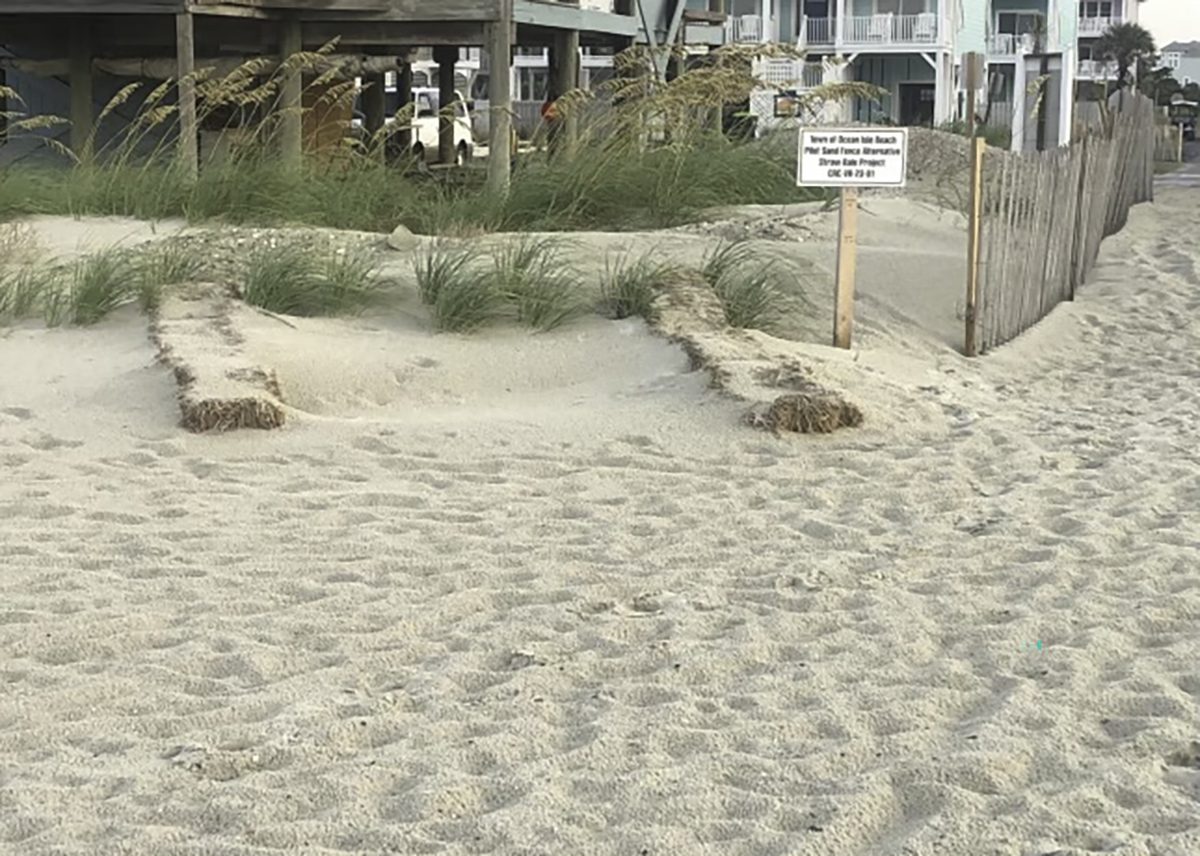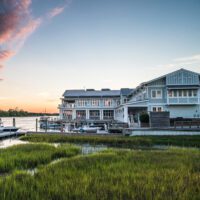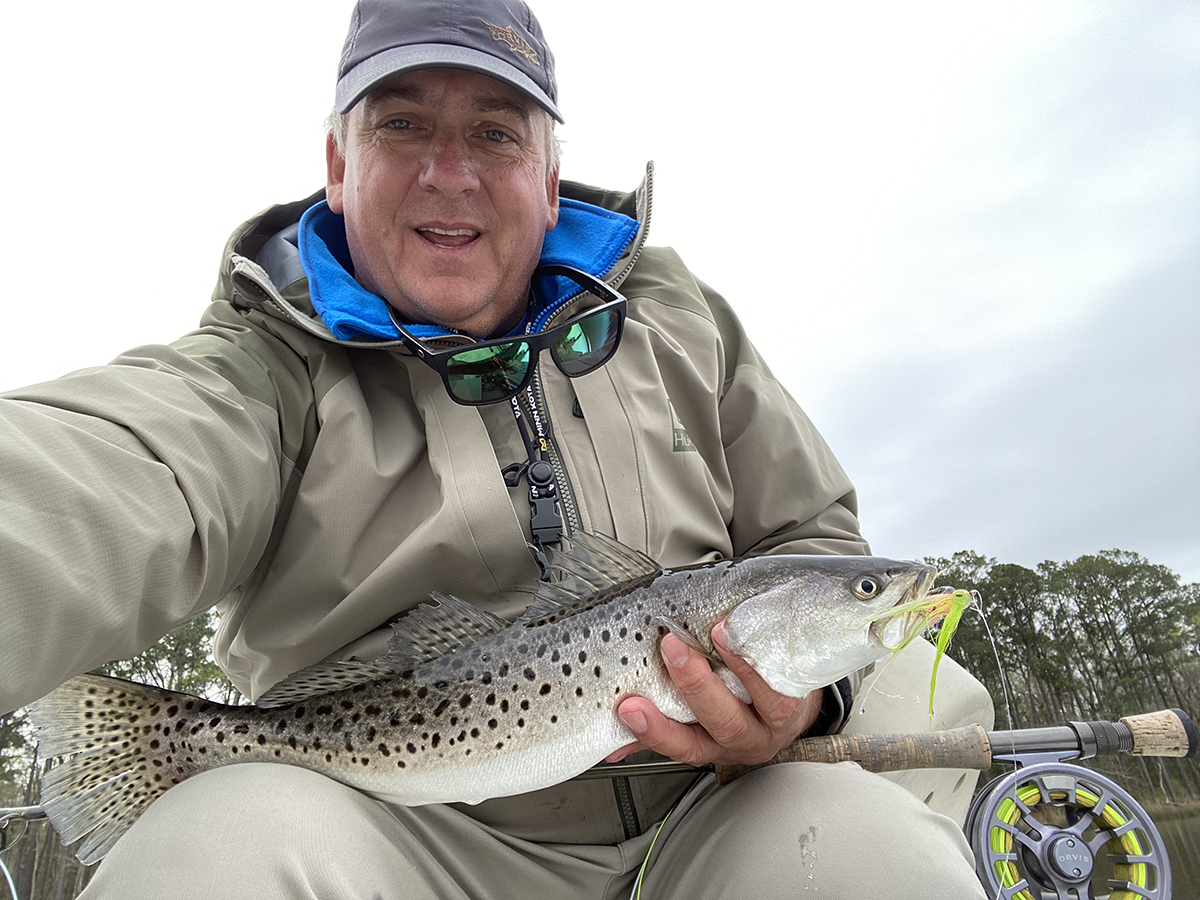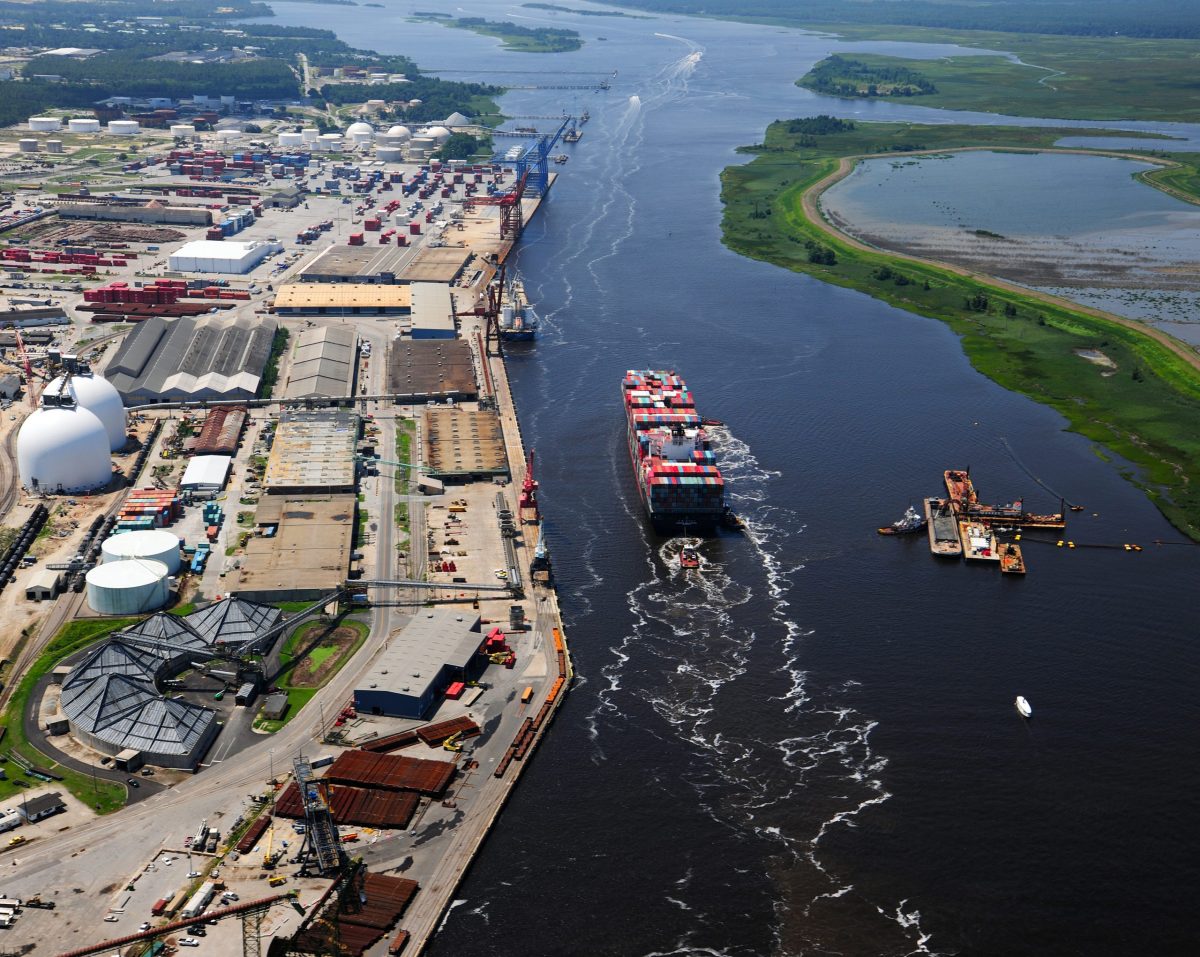
Coastal towns and large homeowner associations representing beachfront properties now have the choice to install a controversial alternative to sand fencing on ocean-facing shores.
The North Carolina Coastal Resources Commission last week amended a rule to allow those entities to apply for a permit to place wheat straw bales on ocean shorelines as a means to protect and build up beachfront dunes.
Supporter Spotlight
The rule, which will now go to the state Rules Review Commission for final approval, limits the use of wheat straw bales to government organizations and HOAs with more than 1 mile of oceanfront shoreline.
Use of wheat hay bales is restricted to those groups until the state gains a better understanding of their impacts to wildlife, including sea turtles, shoreline environment, and their efficacy.
In a 7-5 vote in favor of the rule, some on the Coastal Resources Commission, or CRC, reiterated concerns that have been repeatedly raised in recent years by wildlife officials and environmental organizations.
Those groups, including the North Carolina Wildlife Resources Commission, N.C. Audubon, North Carolina Wildlife Federation and Southern Environmental Law Center, argue additional studies need to be done to understand the potential impacts of wheat straw bales to shoreline habitat and the animals that rely on that habitat.
“I just would like to say I think we’re opening ourselves up to a lawsuit,” Commissioner Lauren Salter said during the CRC’s April 30 meeting in Manteo. “I think Southern Environmental Law Center is going to definitely pursue it based on the comments that we received.”
Supporter Spotlight
The effectiveness of wheat straw bales on an oceanfront shore was initially tested as an alternative to wooden sand fencing in 2015 on Figure Eight Island, a privately owned island north of Wilmington.
The North Carolina Division of Coastal Management issued a Coastal Area Management Act permit to two properties to initial a pilot study on the New Hanover County island.
The bales eventually became covered with sand, but, within a few months, they were washed away in a storm, according to the division.
Wheat straw bales were not allowed on a North Carolina beach again until 2023, after Ocean Isle Beach officials requested approval to place them on a portion of the town’s oceanfront shore.
Ocean Isle Town Administrator Justin Whiteside reminded commissioners last week that the town made the request because sand fencing was hard to acquire in the months following the COVID-19 pandemic.
Town officials noted the pilot project on Figure Eight Island and wanted to mimic it, he said.
“It was successful in some areas,” on Ocean Isle, Whiteside said. “Then we did have a storm and some of it washed away. Others, it’s still covered up and, as far as I’m aware, it’s still there just all covered up with sand.”
Division officials have said they do not expect a significant uptick in the use of straw bales because they tend to cost more than traditional sand fencing and they would need to be replaced more frequently than fencing.
Coastal Resources Commissioner Jordan Hennessy last week said that his position on the rule amendment remained the same as those he had expressed during a previous meeting.
Hennessy questioned whether the rule, by omitting private property owners from being able to apply for a permit to install wheat straw bales, is constitutional.
“I’ll be voting against the rule because I don’t believe it’s constitutional,” he said.
The CRC’s legal counsel, Mary Lucasse, advised that the rule amendment is not unconstitutional.
“I don’t see anything unconstitutional that’s jumping out on me, and I don’t actually understand your argument, commissioner, as to why you think it’s unconstitutional,” she said. “We do a lot of rulemaking that focuses on situational things, and we sometimes try things, as we did with (wheelchair-accessible) mats, with local governments being able to do it first, and we have not drawn any challenges to that based on constitutionality or other things, and I don’t see an issue in that.”
Under the amended rule, wheat straw bales cannot impede public or emergency vehicle access or be installed in a manner that endangers nesting sea turtles, which is similar the sand fencing rule.
Installation of wheat straw bales will require consultation with the U.S. Fish and Wildlife Service and the state Wildlife Resources Commission through permit application review. Ties or bindings on bales must be removed to reduce debris and the possibility of wildlife entanglement.
Straw bales will be limited to 10-foot-long sections, which is the same requirement for sand fencing, and can be no wider than 2 feet or higher than 3 feet. Bales can not be more than 10 feet waterward of the first line of stable, natural vegetation, erosion scarp or toe of a frontal dune.
Sections of straw bales, sand fencing, or Christmas trees, which may also be used to trap sand, must be spaced 7 feet apart. Nonfunctioning, damaged bales or stakes that have moved from their alignment must be repaired or removed from the shore.







